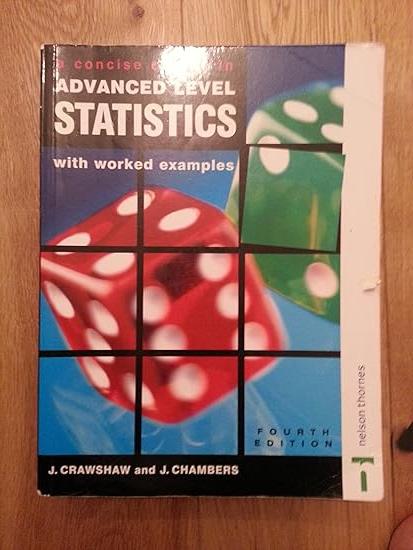The discrete random variable X can take only the values 0, 1, 2, 3, 4, 5. The
Question:
The discrete random variable X can take only the values 0, 1, 2, 3, 4, 5. The probability distribution of X is given by the following, where a and b are constants. PX-0) P(X-1) = P(X-2)-a P(X-3) PX-4)-P(X-5)-b PIX>2) 3P(X <2)
(a) Determine the values of a and
b,
(b) Show that the expectation of X is determine the variance of X. and
(c) Determine the probability that the sum of two independent observations from this distribution exceeds 7. (C)
Fantastic news! We've Found the answer you've been seeking!
Step by Step Answer:
Related Book For 

A Concise Course In Advanced Level Statistics With Worked Examples
ISBN: 9780748754755
4th Edition
Authors: J. Crawshaw, J. Chambers
Question Posted:





